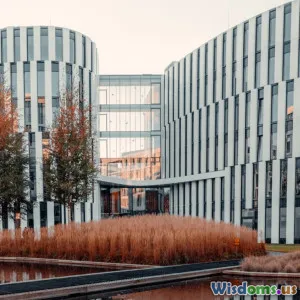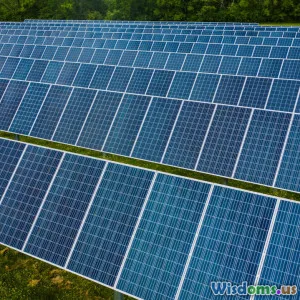
How Urban Parks Boost Local Economies
8 min read Discover how urban parks drive local economic growth through sustainability and community engagement. (0 Reviews)
How Urban Parks Boost Local Economies
Urban parks often evoke images of serene green spaces offering respite from city life, but their impact goes far beyond aesthetics and leisure. These patches of urban nature are vital contributors to local economies, acting as catalysts for economic growth while fostering sustainability. From increasing property values to encouraging local businesses and tourism, urban parks serve multiple economic functions. This article dives deep into the intricate ways urban parks boost local economies, supported by real-world examples and data.
The Economic Ripple Effects of Urban Parks
At first glance, urban parks may seem like a public expense with limited economic returns. However, numerous studies demonstrate otherwise, revealing that parks generate far-reaching financial benefits that exceed their costs.
Increased Property Values and Tax Revenues
One of the most direct economic benefits of urban parks is their positive effect on nearby property values. Research by the National Recreation and Park Association (NRPA) shows residential properties adjacent to parks command premiums as high as 20-30% compared to those further away. This proximity creates enhanced desirability, transforming neighborhoods.
For instance, New York City's Central Park contributes billions annually through increased property taxes from adjacent neighborhoods such as the Upper West Side and Upper East Side. This uplift supports municipal budgets without additional taxes on residents.
Moreover, in Portland, Oregon, studies reveal homes bordering parks enjoy faster sales and higher appreciation rates. These increased tax revenues often funnel directly into community services, making parks drivers of positive fiscal cycles.
Stimulating Local Business and Employment
Urban parks attract foot traffic that stimulates local commerce. Visitors often patronize nearby cafes, restaurants, retail stores, and other small businesses, particularly in districts where park-related events, markets, and recreational activities regularly take place. This increased consumer activity boosts sales revenues and tax income.
The Atlanta BeltLine project, a network of park spaces and trails, has spurred over $3.7 billion in private investments since its inception while creating thousands of local jobs related to construction, maintenance, and hospitality.
Similarly, parks that host farmers’ markets or artisan fairs create platforms for local entrepreneurs, opening revenue streams unavailable otherwise. By generating employment opportunities, particularly in service and maintenance roles tied to park upkeep and programming, urban green spaces contribute actively to local job markets.
Attracting Tourism and Events
Iconic urban parks such as London’s Hyde Park, Chicago’s Millennium Park, and Tokyo’s Ueno Park are significant tourist magnets. These parks host cultural events, music festivals, and exhibitions, which draw international and domestic tourists. Increased tourism leads to higher spending on accommodation, dining, and transit within the city.
Millennium Park alone welcomes over 25 million visitors annually, generating over $100 million in economic impact for Chicago. Such tourism can act as an essential component of a city's broader economic strategy, especially when combined with heritage and cultural offerings.
Supporting Health and Sustainability — An Economic Asset
Beyond direct financial transactions, urban parks contribute indirectly by promoting public health. Reduced healthcare costs associated with increased physical activity and mental well-being have been linked to access to green spaces.
A study published in The Lancet Planetary Health estimated that urban greenery could translate into billions saved globally due to lower incidences of cardiovascular and respiratory diseases. These cost savings benefit local economies through reduced public spending and enhanced workforce productivity.
Sustainability-focused parks also contribute by improving air quality, managing stormwater, and mitigating urban heat, which reduce municipal expenses for infrastructure and emergency services. For example, Philadelphia’s Green City, Clean Waters initiative, incorporating green infrastructure including parks, has reduced stormwater management costs by millions annually.
Case Studies Demonstrating Urban Parks’ Economic Impact
The High Line, New York City
An excellent model of urban park revitalization fueling economic growth is The High Line, an elevated linear park built on a former rail line in Manhattan. Since its opening in 2009, it has dramatically boosted surrounding property values—some as much as 35%—and attracted millions of tourists each year.
Local businesses witnessed a surge in revenue, and the park spurred $5 billion in nearby real estate development, transforming a formerly declining industrial district.
Singapore’s Park Connector Network
Singapore’s innovative Park Connector Network links multiple parks, creating green corridors across urban neighborhoods. This system balances ecological benefits with recreation while stimulating economic activities such as tourism cycling tours and outdoor dining spaces.
The initiative also strengthens Singapore’s branding as a green and livable city, attracting international business and expatriates—key drivers of economic growth.
Challenges and Considerations
While urban parks offer considerable economic advantages, municipalities must address challenges to maximize benefits:
- Maintenance Costs: Without adequate funding, parks can deteriorate, reducing appeal and economic value.
- Gentrification Risks: Enhanced property values risk pricing out long-term residents unless balanced with affordable housing measures.
- Equitable Access: Economic gains should be evenly distributed by ensuring parks are accessible to underserved communities.
Strategic urban planning, community involvement, and sustainable funding models are essential to address these complexities.
Conclusion: Urban Parks as Anchor Assets for Sustainable Economic Development
Urban parks are not mere luxuries but essential engines for sustainable local economic growth. They elevate property values, catalyze business and tourism, enhance health, and reduce environmental costs, collectively building resilient urban economies.
Municipal leaders, urban planners, and community advocates must invest thoughtfully in urban green spaces to unlock their full economic potential. By doing so, cities can create thriving environments where nature and economy grow hand in hand—a model for sustainable urban futures.
References:
- National Recreation and Park Association, Parks and Property Values, 2015.
- The City of Chicago, Millennium Park Economic Impact Analysis, 2017.
- The Lancet Planetary Health, Health Benefits of Urban Greenery, 2020.
- Philadelphia Water Department, Green City, Clean Waters Program Report, 2018.
- Friends of the High Line, Economic Impact Overview, 2019.
Rate the Post
User Reviews
Popular Posts





















